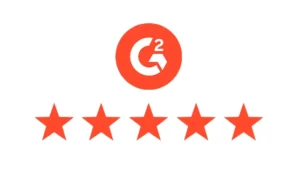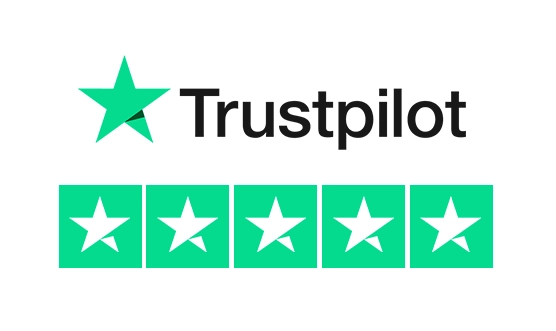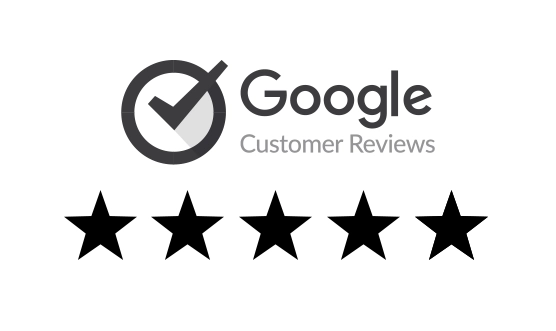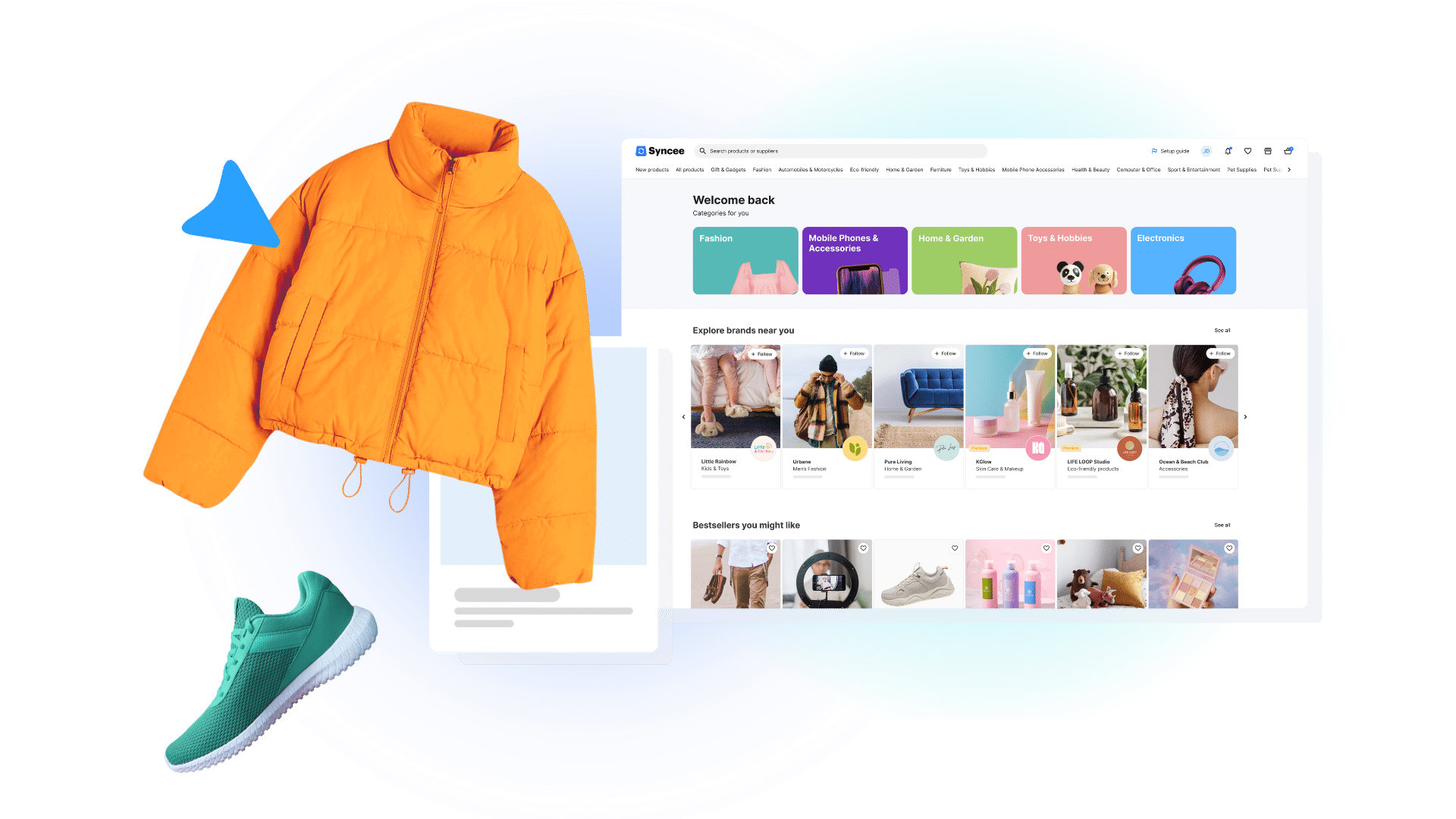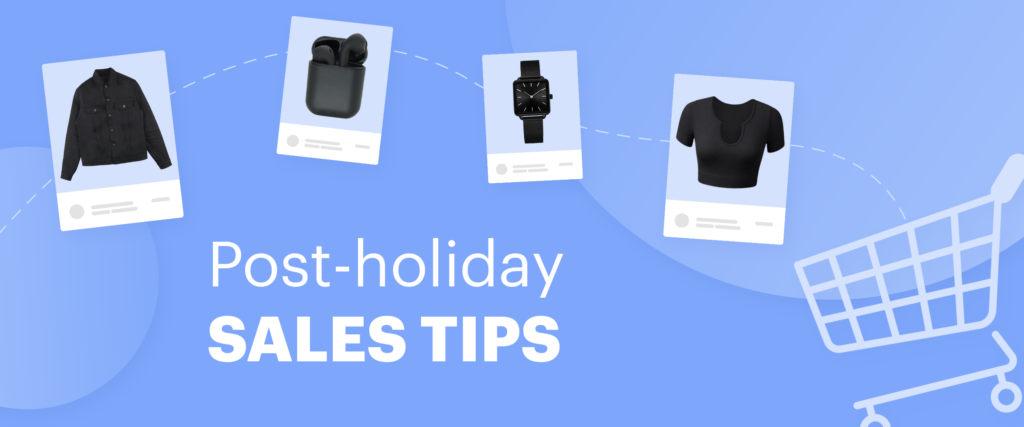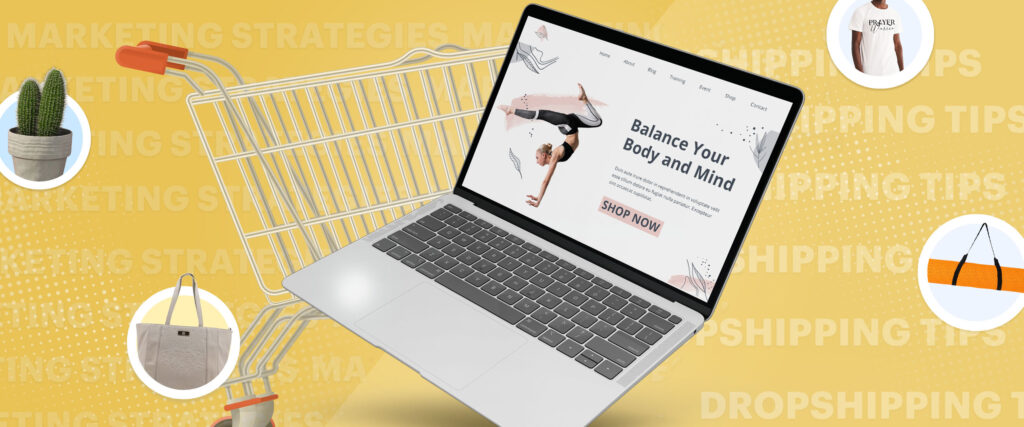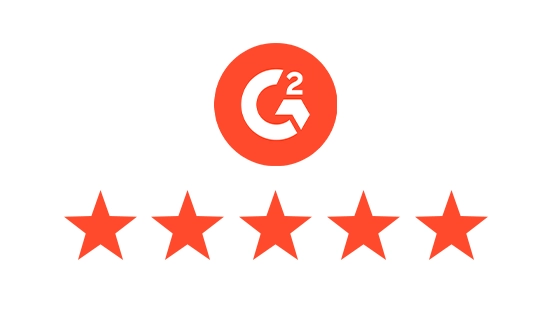In 2025, Shopify dropshipping marketing continues to evolve rapidly. If you run a Shopify store, mastering Shopify dropshipping marketing strategies is essential to stand out and ensure your online store thrives. Even the best-designed store won’t generate revenue if people don’t know about it. Just like a physical store located in an empty alley, an online store without strategic Shopify dropshipping marketing efforts is invisible. That’s why allocating a budget and developing an effective Shopify dropshipping marketing strategy is critical.
In this comprehensive guide, we’ll explore essential marketing techniques, both paid and organic, designed specifically for Shopify dropshipping. From foundational strategies to advanced marketing tactics, this guide is your roadmap to Shopify dropshipping marketing success in 2025.
Before diving into specific tactics, it’s crucial to understand what Shopify dropshipping marketing entails.

What is a Marketing Strategy?
A marketing strategy is a comprehensive plan formulated to reach potential customers and convert them into paying customers. It outlines how a business will achieve its marketing objectives through various tactics such as SEO, social media, email marketing, content marketing, influencer partnerships, and paid advertising. Effective marketing strategies help Shopify dropshipping stores attract visitors, create brand awareness, and increase sales.
Importance of a Solid Marketing Strategy
Without a clear marketing strategy, Shopify dropshipping marketing efforts can become scattered, wasting resources and opportunities. An effective strategy helps streamline activities, ensuring that all marketing efforts align with business goals. You will also need a great business idea.
Components of a Successful Marketing Strategy
- Market Research
- Clear Goals and Objectives
- Target Audience Identification
- Strategic Marketing Channels
- Budget Planning
- Performance Measurement
Inbound Marketing vs. Outbound Marketing
Inbound marketing involves attracting customers through relevant and helpful content, providing solutions to their problems. It includes strategies such as blogging, SEO, content marketing, social media, and webinars.
Outbound marketing, on the other hand, involves proactive outreach to consumers to get them interested in your products. Common methods include paid advertising, cold emails, direct mail, and telemarketing.
Understanding the balance between inbound and outbound marketing is vital for effective Shopify dropshipping marketing, as it allows you to leverage both attraction and direct outreach effectively.

1. Organic Marketing Strategies
Organic marketing is essential for sustainable, long-term growth. It allows you to attract customers naturally through valuable content, strategic SEO practices, and active engagement on social media platforms. Effective organic strategies significantly enhance your store’s credibility and customer trust.
SEO for Shopify Stores
SEO remains a cornerstone of Shopify dropshipping marketing. To maximize your online visibility, carefully optimize your product pages, including well-crafted titles, meta tags, descriptions, and keyword-rich content. Regularly update your website with fresh, relevant content that aligns with search engine algorithms. Consistent SEO practices improve organic traffic and boost your store’s visibility, ensuring long-term, sustainable growth.
Content Marketing Essentials
Content marketing is fundamental to building brand authority and attracting targeted traffic. Regularly produce high-quality content such as blogs, how-to guides, infographics, and videos. This content should address the specific pain points and interests of your target audience, establishing your Shopify store as an expert in your niche. Over time, this strategy will significantly enhance your store’s visibility in search engine results and strengthen customer trust.
Leveraging Social Media
Social media platforms offer immense opportunities for Shopify dropshipping marketing. Instagram is perfect for visually appealing product presentations, while TikTok effectively captures younger audiences with creative and viral-friendly content. Facebook provides robust community-building and targeted advertising capabilities. Maintain regular, consistent posting schedules, and actively engage with your followers to build lasting relationships and drive consistent traffic to your store.
- Instagram: Ideal for visual product promotion.
- TikTok: Effective for viral content and trending products.
- Facebook: Great for community building and brand engagement.
2. Paid Marketing Techniques
Paid marketing techniques quickly generate targeted traffic, driving immediate results. They complement your organic strategies, providing instant visibility and sales opportunities through platforms like Facebook, Google, TikTok, and influencer partnerships.
Meta Ads (Facebook & Instagram Ads)
Meta ads are essential for highly targeted Shopify dropshipping marketing. Use detailed demographic, behavioral, and interest-based targeting to ensure your ads reach the right audience. Regularly monitor ad performance, adjusting strategies based on performance data to optimize effectiveness and maximize return on investment.
Google Shopping Ads
Google Shopping Ads effectively reach buyers actively searching for your products, making them highly valuable in Shopify dropshipping marketing. Optimize product listings for maximum visibility and continuously refine your campaigns based on insights from performance analytics to enhance conversions.
TikTok Ads
TikTok ads offer exceptional engagement opportunities, especially with younger audiences. Create engaging, short-form videos showcasing your products creatively to maximize impact. Regularly test and refine your TikTok advertising strategies to maintain high engagement rates and effective conversions.
Influencer Marketing
Influencer marketing leverages the credibility and reach of influencers to promote your products. Partnering with micro-influencers, who typically have highly engaged audiences, provides cost-effective and credible promotion. Select influencers whose audiences align closely with your target market to optimize campaign results and amplify your Shopify dropshipping marketing effectiveness.

3. Developing Your Marketing Strategy
Developing an effective marketing strategy involves understanding your target audience, setting clear objectives, strategically allocating resources, and continuously optimizing based on performance metrics. A structured approach ensures every marketing effort aligns seamlessly with your overarching business goals. You will also need to learn how to make the first sales in dropshipping.
Defining Your Target Audience
Accurately defining your target audience is crucial for effective Shopify dropshipping marketing. Go beyond basic demographics such as age, gender, and location. Dive deeply into your audience’s interests, buying behaviors, online habits, and pain points. Utilize analytics tools, surveys, and market research to build detailed buyer personas. Understanding your target audience at this granular level enables highly tailored marketing campaigns that resonate deeply, significantly increasing engagement rates, conversions, and long-term customer loyalty.
Setting SMART Marketing Goals
Setting SMART (Specific, Measurable, Achievable, Relevant, Time-bound) goals is essential for Shopify dropshipping marketing success. Clearly defined goals help you track progress, evaluate effectiveness, and make informed decisions. Examples of SMART goals might include increasing website traffic by 20% within three months, achieving a specific sales target within six months, or boosting email subscription rates by a defined percentage. Regularly reviewing and adjusting these goals based on real-time data ensures your marketing remains aligned with your business objectives.
Allocating Your Marketing Budget
Effectively allocating your Shopify dropshipping marketing budget involves a strategic balance between organic and paid marketing. Consider short-term and long-term outcomes when distributing your funds. Organic strategies like SEO and content marketing require consistent investment over time but offer sustainable growth. Paid marketing techniques, such as social media ads and influencer collaborations, deliver quicker results but typically at higher immediate costs. Adjust your budget regularly based on the performance of each strategy, market trends, and overall return on investment (ROI).
Monitoring & Optimizing Your Campaigns
Regular monitoring and optimization are pivotal for successful Shopify dropshipping marketing. Continuously analyze key performance indicators (KPIs), including Return on Ad Spend (ROAS), conversion rates, click-through rates (CTR), and overall engagement metrics. Use analytical tools like Google Analytics, Shopify analytics, and social media insights to gather detailed data. Regularly optimize your campaigns by tweaking ad creative, adjusting targeting criteria, improving landing pages, and refining content based on performance insights. Ongoing optimization ensures maximum efficiency and effectiveness in your marketing efforts.
Analytics on Shopify Store Admin:
- Log in to your Shopify Admin dashboard.
- Click on Analytics in the left-hand menu.
- Choose Reports, then open Sessions over time or Sessions by referrer.
- Here, you’ll see the number of visitors, top channels (like Facebook or Google), and device types.
Using Google Analytics
- Open Google Analytics and log in.
- Navigate to Reports > Acquisition > Traffic acquisition.
- Here, you can view:
- How users arrive (ads, organic, social)
- What pages they visit
- How long they stay
- Conversion paths (if configured)

4. Essential Practices for Smarter Marketing
Marketing best practices help you maintain efficiency, effectiveness, and competitiveness. By consistently leveraging analytics, regularly testing marketing approaches, and automating repetitive tasks, you ensure optimal results and continuous improvement in your Shopify dropshipping marketing efforts.
- Utilizing Analytics for Decision Making: Analytics play a vital role in Shopify dropshipping marketing by providing data-driven insights that inform strategic decisions. Tools such as Google Analytics, Shopify dashboards, and social media analytics offer extensive data on customer behavior, campaign effectiveness, traffic sources, and conversion paths. By thoroughly analyzing this data, you can identify strengths, uncover weaknesses, and make informed adjustments that enhance your overall marketing strategy and maximize return on investment.
- A/B Testing for Optimization: A/B testing is a powerful optimization tool in Shopify dropshipping marketing, enabling you to experiment with variations in content, layout, headlines, visuals, and calls-to-action (CTAs). Conducting regular A/B tests helps identify the most effective messages and visual elements that drive conversions and engagement. Consistently applying insights gained from A/B testing will significantly improve your marketing performance, reduce guesswork, and enhance the overall effectiveness of your campaigns.
- Leveraging Automation: Automation streamlines routine Shopify dropshipping marketing tasks, freeing up resources for strategic activities. Utilize marketing automation tools for email marketing campaigns, social media posting schedules, customer segmentation, and retargeting. Effective use of automation ensures consistency, reduces human error, and improves efficiency. By automating repetitive tasks, your team can focus more on strategic planning, creative campaign development, and in-depth analysis, ultimately enhancing your store’s marketing performance.
- Customer Retention Strategies: Customer retention strategies are vital for long-term Shopify dropshipping marketing success. Implement personalized emails, loyalty programs, retargeting campaigns, and post-purchase follow-ups to nurture existing customers. Offering exclusive discounts, rewards programs, and personalized recommendations can significantly enhance customer loyalty and lifetime value, ensuring sustained profitability for your Shopify store.
- Cross-selling and Upselling Techniques: Cross-selling and upselling are proven methods to increase average order value in Shopify dropshipping marketing. Suggest complementary products (cross-selling) or higher-value alternatives (upselling) at strategic points during the shopping experience, such as checkout or product pages. Effective cross-selling and upselling enhance customer satisfaction by providing relevant product recommendations, driving increased revenue.
- Harnessing User-Generated Content (UGC): User-generated content (UGC) boosts credibility and enhances trust in your Shopify dropshipping marketing. Encourage satisfied customers to share reviews, testimonials, and photos or videos of their purchases. Showcase this authentic content prominently on your website and social media platforms, significantly influencing potential buyers’ purchasing decisions.
- Spending Wisely on Marketing: Investing wisely in Shopify dropshipping marketing requires strategic planning. Allocate budgets based on performance metrics and continuously adjust spending to prioritize high-performing campaigns. Diversify your investments across multiple channels to minimize risk and maximize potential reach. Track every marketing dollar spent to clearly understand its impact on sales, enabling informed, cost-effective marketing decisions.
- Tips to Drive Purchases in Your Store: Encourage visitors to become buyers by optimizing their shopping experience. Ensure your Shopify store has user-friendly navigation, fast load times, and clear, compelling calls-to-action. High-quality product images, detailed descriptions, transparent pricing, and prominently displayed customer reviews significantly influence buying decisions. Offering limited-time discounts, free shipping, or easy returns can also reduce barriers to purchase and improve conversion rates.
- Importance of Market Research: Conducting thorough market research is vital for successful Shopify dropshipping marketing. Market research helps identify trending products, understand consumer behavior, recognize competitor strategies, and determine potential market gaps. Regular market analysis informs your product selection, content strategies, and promotional activities, ensuring your marketing efforts remain relevant and highly effective.
- Additional Marketing Techniques: Explore additional methods to market your Shopify store effectively. Collaborations with complementary brands, affiliate marketing programs, and participation in relevant online communities or forums can greatly expand your audience. Regular webinars, podcasts, or virtual events also establish authority and engage your target audience, driving consistent traffic to your store.

5. Marketing Challenges & Solutions
Facing challenges is inevitable in Shopify dropshipping marketing. Identifying common issues and preparing strategic solutions proactively helps you navigate obstacles smoothly and efficiently.
High Competition
High competition can make it challenging to gain visibility and market share. Overcome competition by employing niche marketing strategies, emphasizing exceptional customer service, creating personalized shopping experiences, and building strong brand differentiation. Focus on your unique selling propositions and leverage customer testimonials and reviews to build trust and credibility in highly competitive markets.
Ad Cost Management
Rising ad costs can significantly impact profitability. Optimize ad spending by continuously refining targeting parameters, employing advanced audience segmentation, and regularly analyzing campaign performance to identify and eliminate ineffective ads quickly. Additionally, explore cost-effective marketing methods such as organic SEO, influencer collaborations, and social media marketing to balance overall advertising expenditures, ensuring sustained profitability and growth.
6. Best Marketing Tips to Boost Conversions
Small tweaks can make a big difference in your Shopify dropshipping marketing results. Here are 10 actionable tips that can help turn browsers into buyers and boost customer satisfaction:
- Recover Abandoned Carts with Automation: Set up automated email reminders or SMS messages for users who leave items in their cart. Include a small discount or limited-time offer to encourage them to complete the purchase.
- Include a Surprise Gift: When you order your products to yourself before shipping to customers, add a personal touch by including a thank-you note, small gift, or coupon. This builds customer loyalty and encourages word-of-mouth marketing.
- Offer First-Time Buyer Discounts: A limited-time offer or a percentage off for first-time customers can remove hesitation and push them toward conversion.
- Use Exit-Intent Popups: Implement popups that appear when users are about to leave the site. Offer a discount code, free shipping, or a lead magnet to keep them engaged.
- Utilize Urgency and Scarcity: Add countdown timers, low stock alerts, or flash sale announcements to your product pages to create urgency and prompt faster decision-making.
- Highlight Social Proof: Showcase customer reviews, ratings, and testimonials prominently on product pages. Authentic feedback builds trust and influences buying behavior.
- Enable Live Chat Support: Offering real-time assistance can answer last-minute questions, overcome objections, and reduce cart abandonment.
- Implement a Loyalty or Referral Program: Reward repeat purchases and incentivize referrals to organically grow your customer base.
- Personalize the Shopping Experience: Use data-driven tools to display personalized product recommendations, dynamic discounts, and email content tailored to each user.
- Optimize Mobile Experience: Ensure your Shopify store is fast, easy to navigate, and fully optimized for mobile users. Most online traffic comes from mobile devices, so a seamless mobile experience is critical for conversions.

These practical marketing tips are easy to implement and have a measurable impact on your store’s bottom line. Integrating them into your overall Shopify dropshipping marketing strategy will enhance customer engagement, increase conversions, and create a stronger brand presence. One last tip: try AI tools as well to level up your daily todos with your store.
If you are looking for dropshipping products to source and sell, check out Syncee and browse among 12,000+ brands worldwide. You can find local suppliers to sell from and provide fast shipping to customers. Import trending products to your Shopify store immediately from Syncee, and let the app automate the updates and order sync to your suppliers. You just have to focus on marketing your Shopify store while on Syncee you can find products in a wide range of categories such as Fashion, Home, Beauty, Pet Supplies, Furniture, Mother and Kids, Toys, Eco-friendly, Food and Drink, Electronics, Mobile Accessories, and more.
You can also use marketing apps or email marketing apps on Shopify to drive more sales.
How Traffic, Conversions, and Ad Costs Add Up
If you’re selling low-priced items with thin margins (e.g. $20 products with $5 profit), you need huge traffic volumes to be profitable.
Instead, choose products with higher profit margins and a stronger perceived value.
Let’s break down a realistic ecommerce scenario so you can see how traffic turns into profit—or loss. You must also know that if you do not have traffic, you will have no sales.
- Daily visitors: 1,000
- Conversion rate: 1%
- Orders per day: 10
- Average Order Value (AOV): $50
- Daily revenue: $500
- Profit margin: 30%
- Profit before ads: $150
Now add paid advertising into the equation. If your Cost Per Click (CPC) is $1, bringing in 1,000 visitors costs $1,000. That’s an $850 loss.
Let’s try improving your conversion rate to 3%:
- Orders: 30
- Revenue: $1,500
- Profit before ads: $450
- Ad spend (1,000 visitors × $1 CPC): $1,000
- Net result: –$550
Still not profitable. But now reduce your CPC to $0.30 (via better targeting or a more efficient platform):
- Ad spend: $300
- Net profit: $450 – $300 = $150 profit
Conclusion: To build a profitable dropshipping business, you need to balance three key levers:
- Increase your conversion rate
- Lower your advertising costs
- Boost your profit margins
You don’t always need more traffic—you need better performance from the traffic you already have.
Final Thoughts
By comprehensively understanding and effectively applying Shopify dropshipping marketing strategies outlined here, your online store can significantly improve visibility, attract targeted visitors, and increase conversions in 2025.
Remember, success doesn’t happen overnight. The most successful Shopify stores are built with consistency, informed decisions, and a long-term vision. Use data to guide your efforts, test and iterate often, and never stop optimizing your strategies. Embrace both creative storytelling and analytical thinking to craft marketing that not only reaches people but compels them to act.
As digital trends shift and consumer behavior evolves, staying ahead in Shopify dropshipping marketing requires adaptability, curiosity, and a proactive mindset. Keep learning, apply best practices, and stay connected with your audience. Your journey to ecommerce success starts now. Find products to sell now on Syncee dropshipping and wholesale marketplace. Want to learn more about starting to dropship? Check our ultimate dropshipping guide.
Frequently Asked Questions
What are the most essential marketing channels in 2025?
The most effective Shopify dropshipping marketing channels in 2025 include SEO for long-term visibility, Meta ads for laser-targeted outreach on Facebook and Instagram, Google Shopping ads to reach high-intent buyers at the decision stage, influencer marketing for social proof, and social media platforms like TikTok for brand engagement and viral reach.
What is the recommended Shopify dropshipping marketing spend?
It’s advisable to allocate 10–20% of your revenue to Shopify dropshipping marketing, especially during the early growth phase. This budget should cover a balance of paid advertising, content creation, SEO tools, and promotional partnerships. As your store scales, reinvesting based on campaign performance and ROI will help maintain healthy growth while keeping costs efficient.
What are the most essential Shopify dropshipping marketing tools?
To manage and optimize your marketing, use tools such as Google Analytics for tracking traffic and behavior, Shopify analytics for sales insights, and email marketing platforms like Klaviyo or Mailchimp for automation. Social media scheduling tools (like Buffer or Later), SEO plugins, and A/B testing platforms can further refine your campaigns and enhance results.



